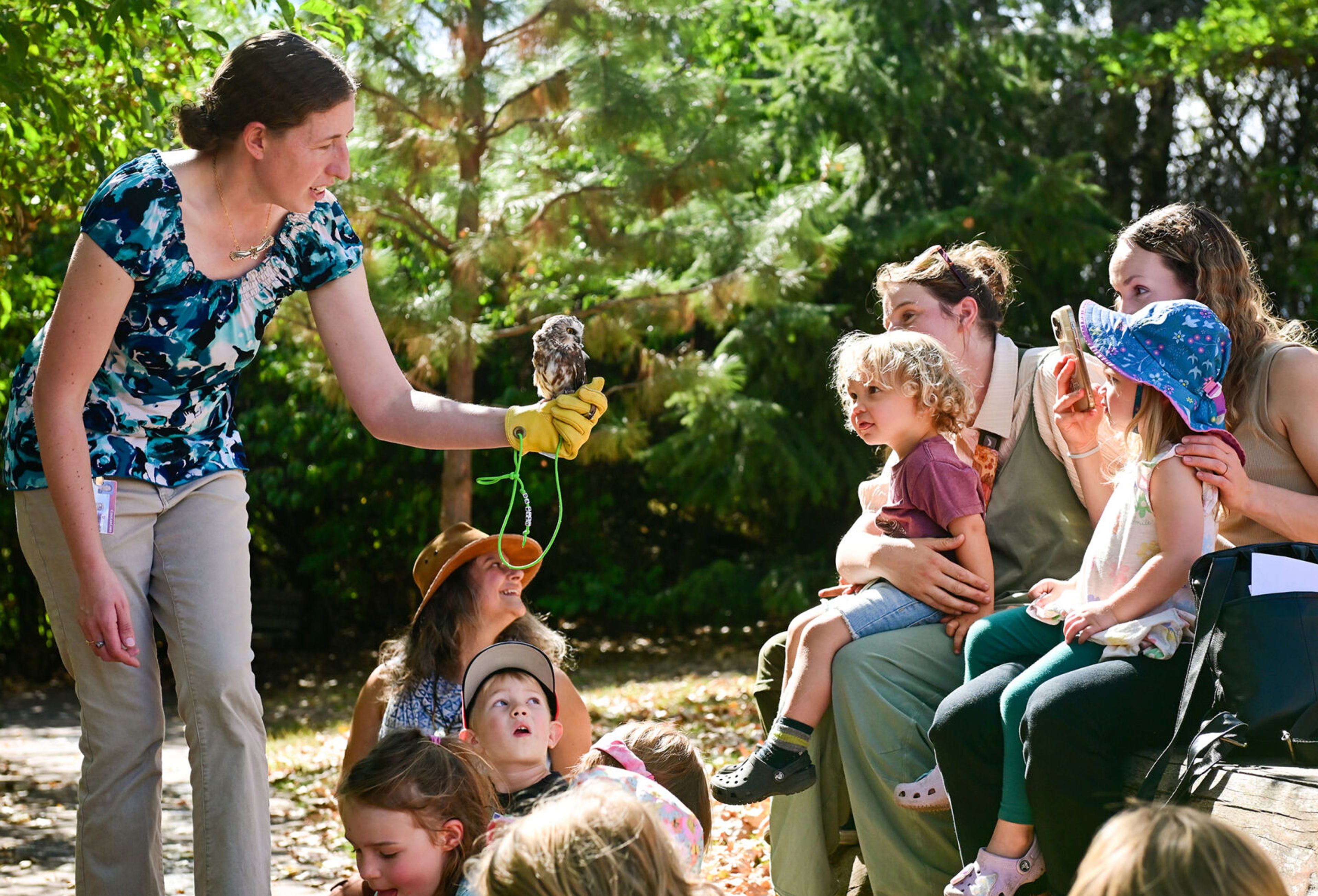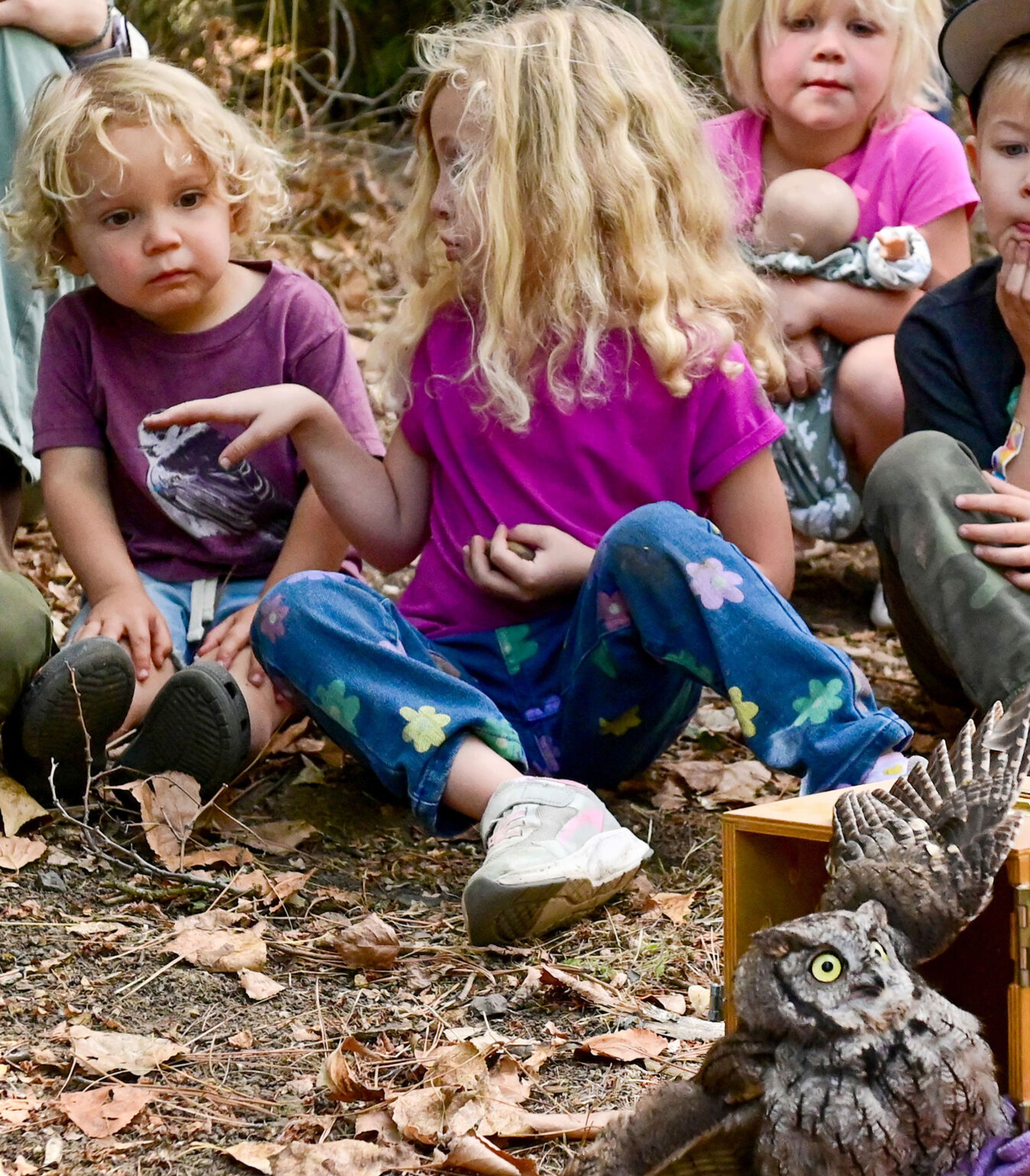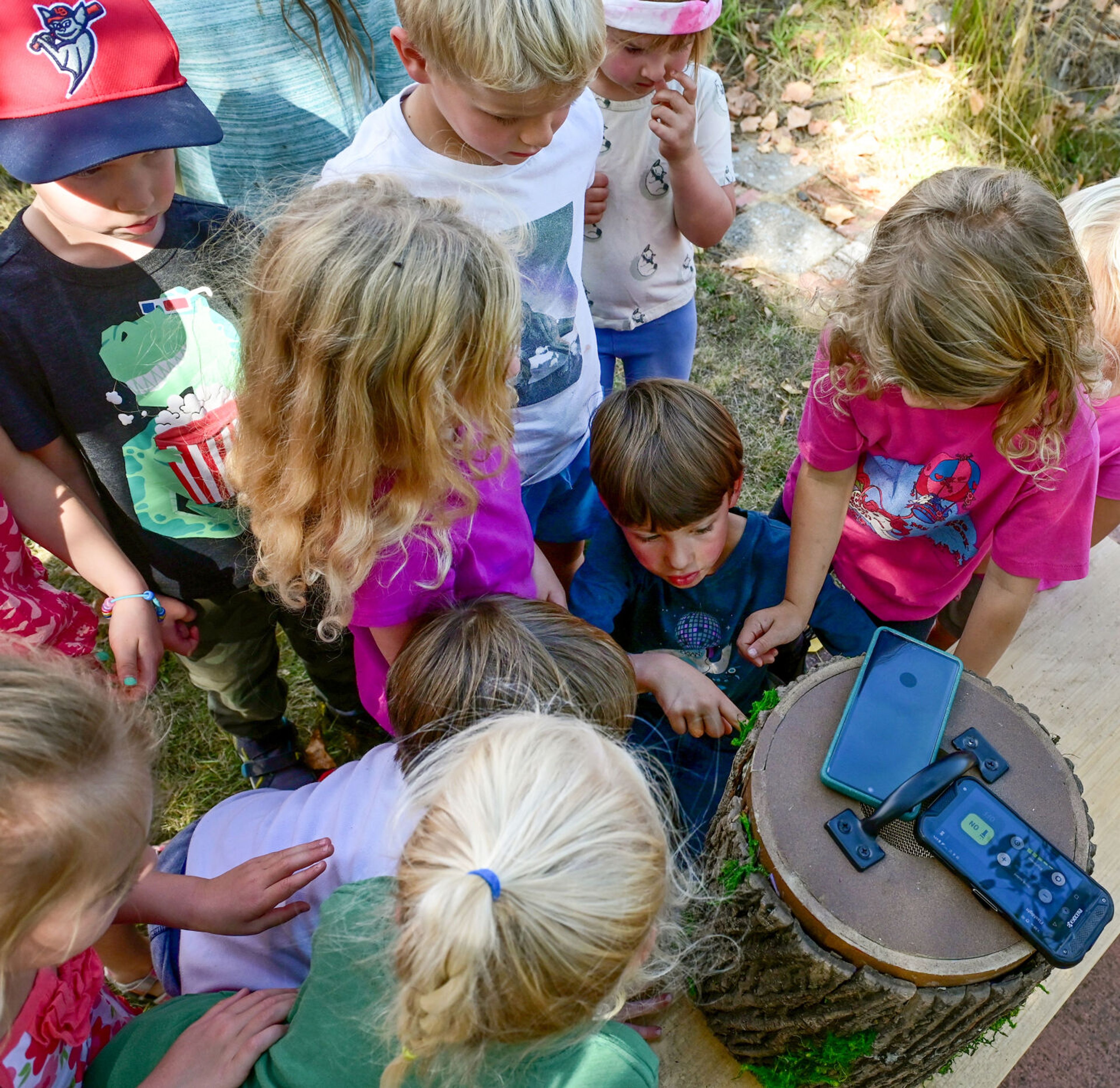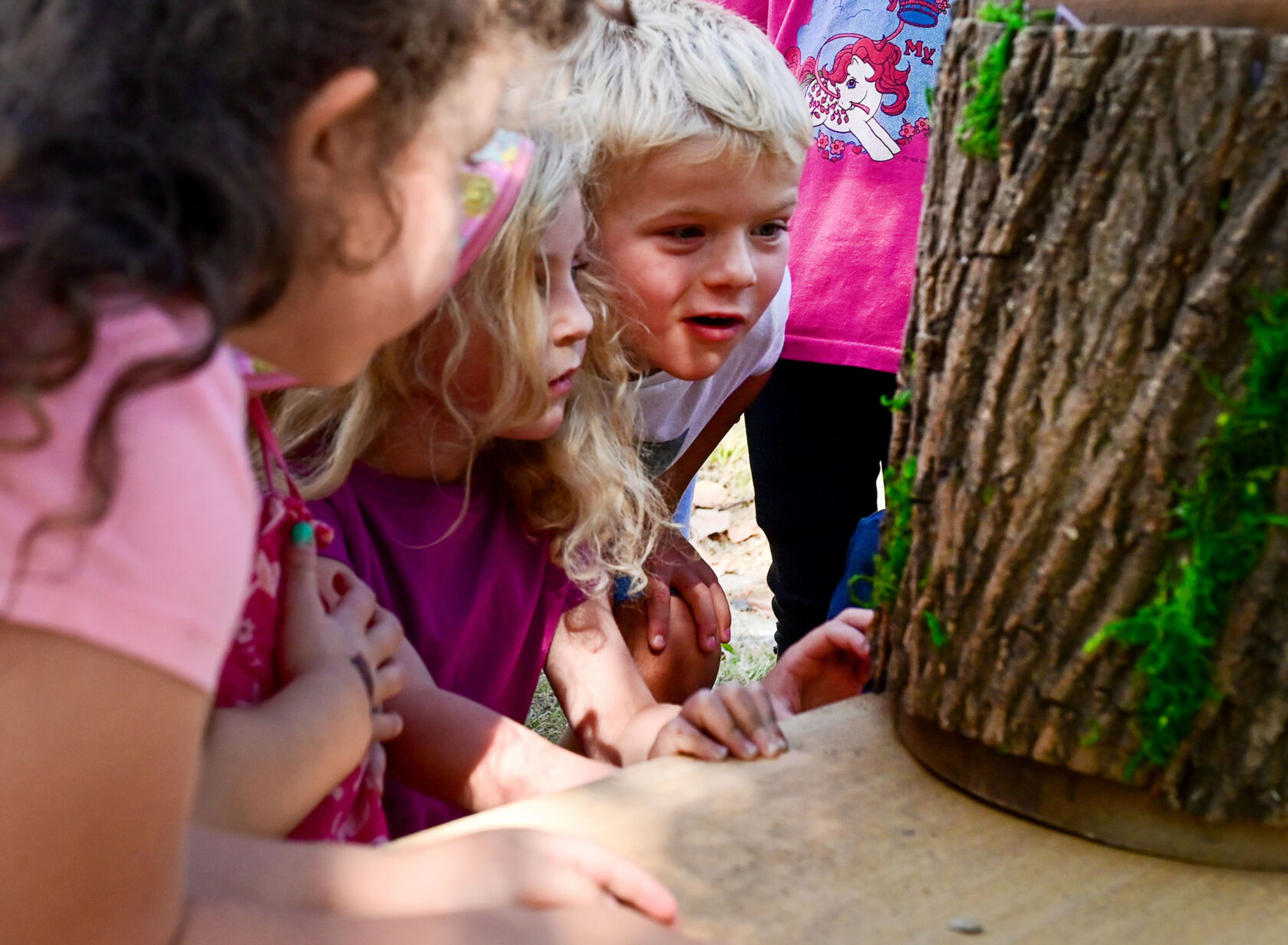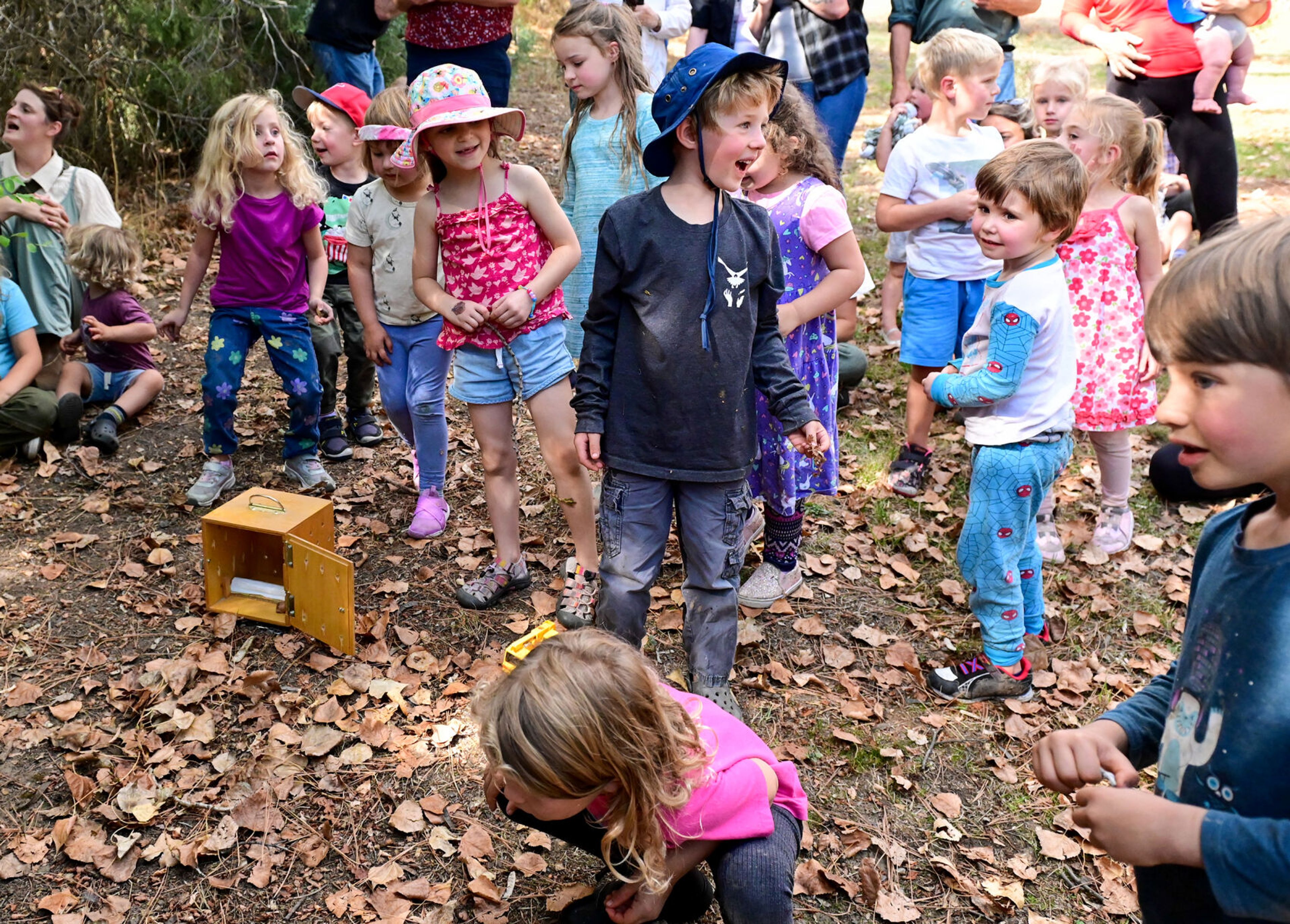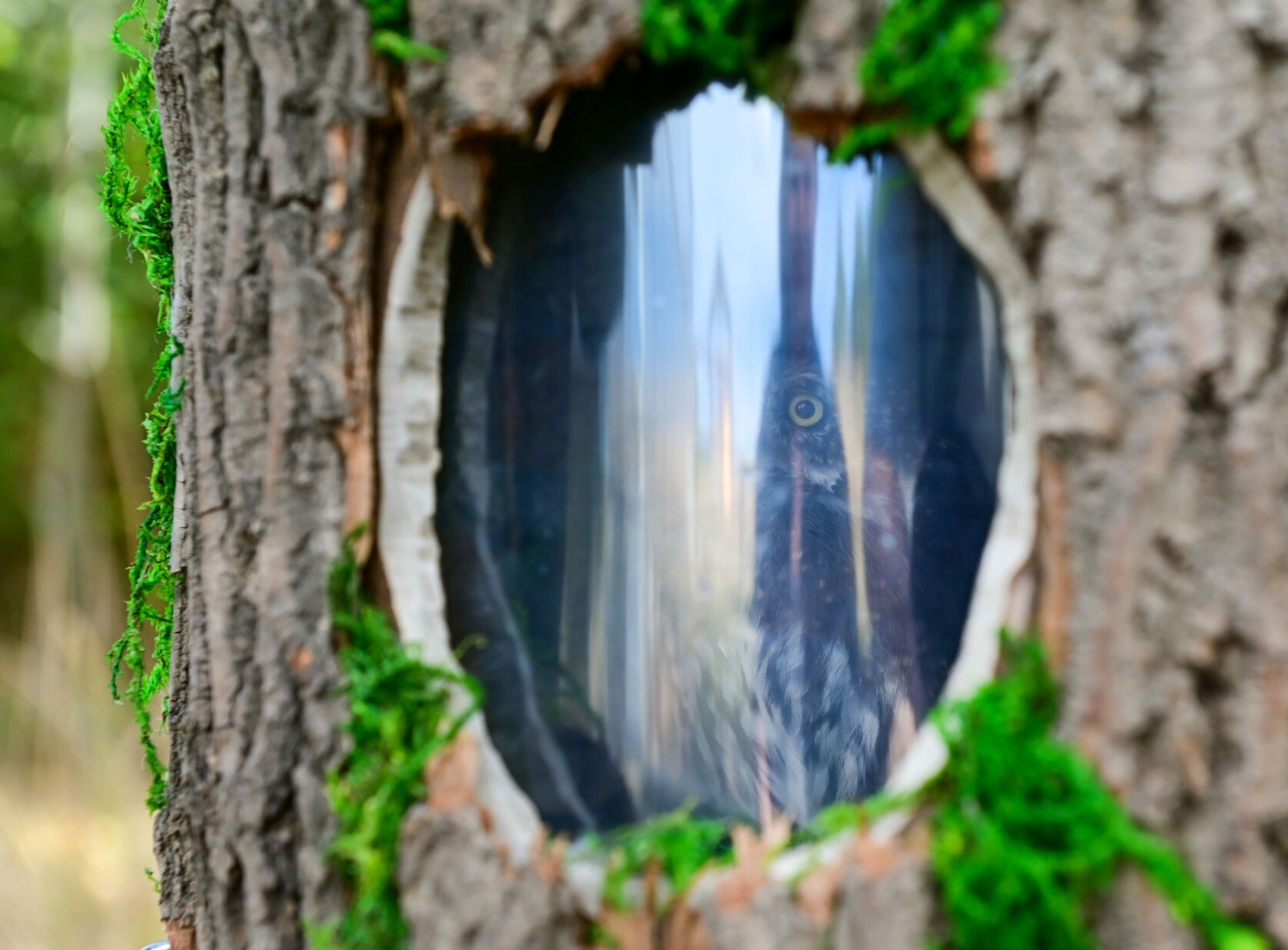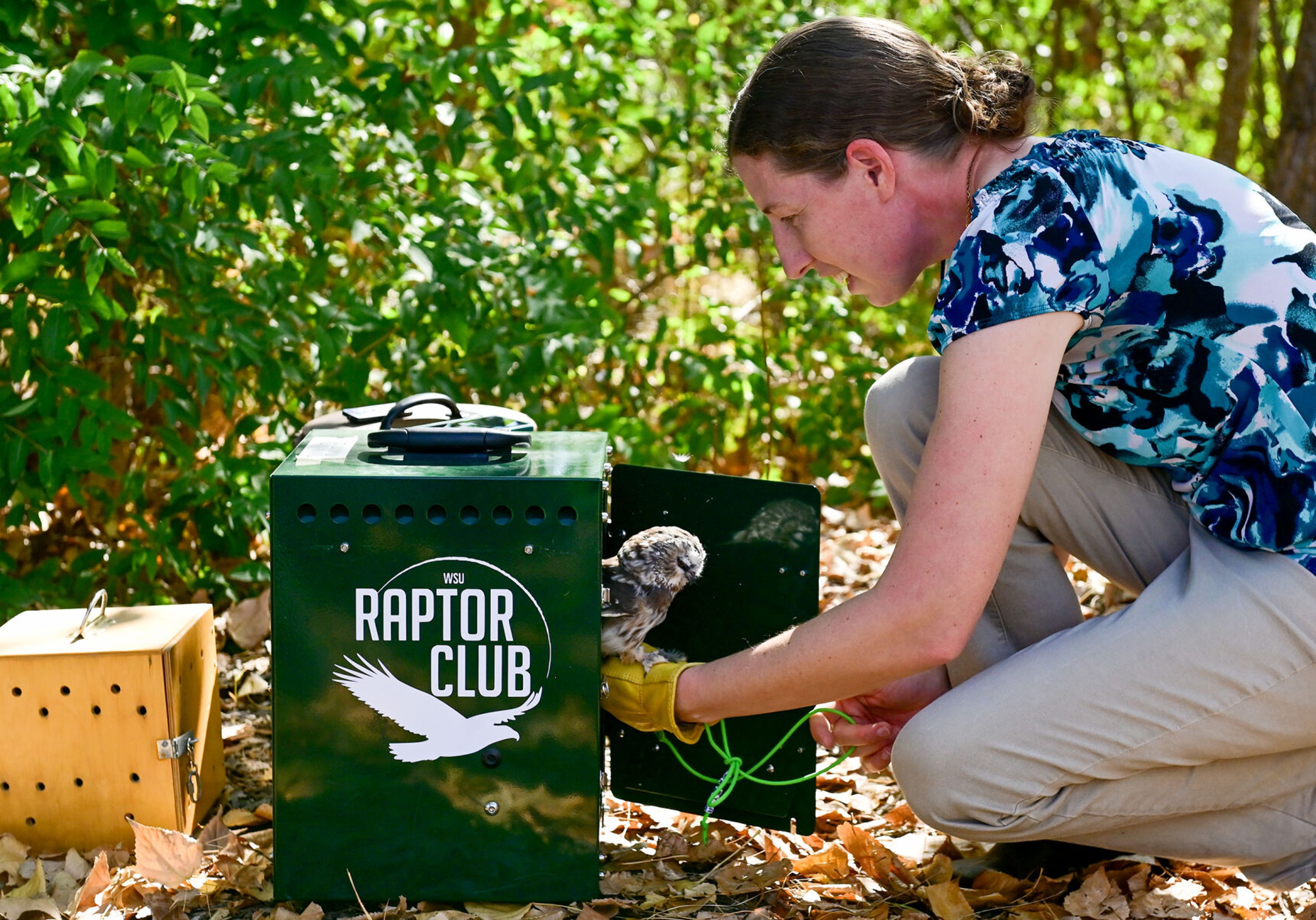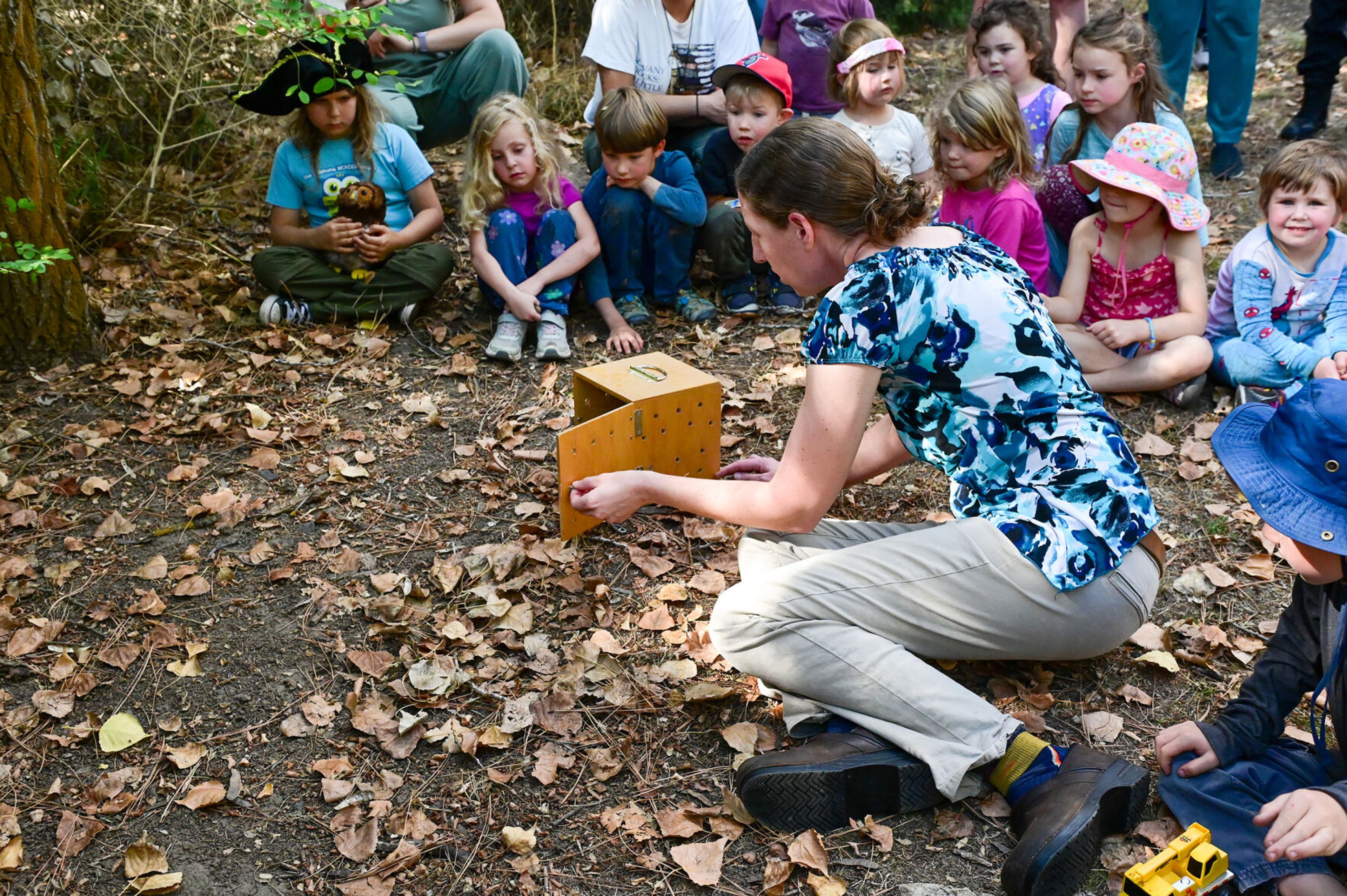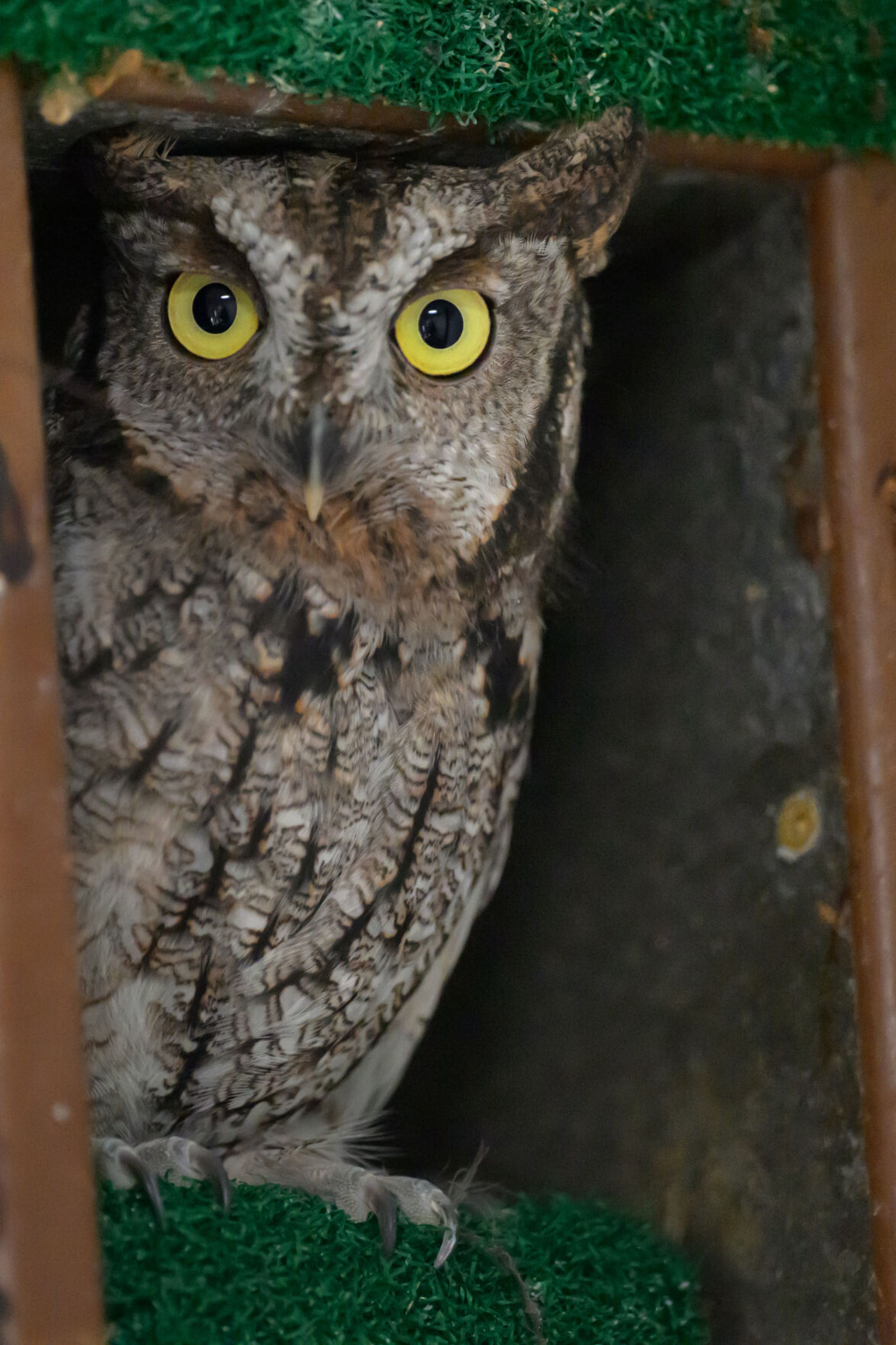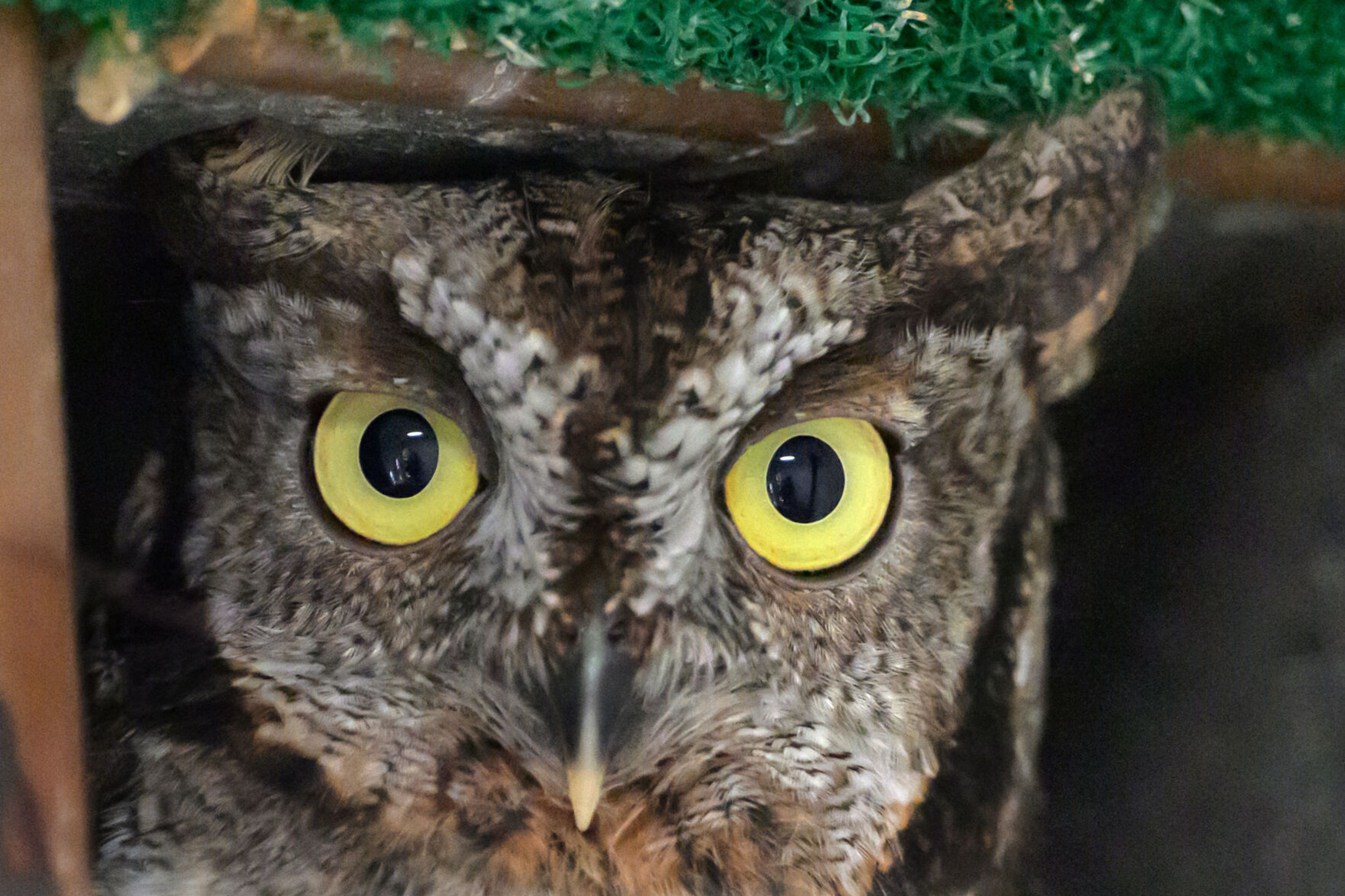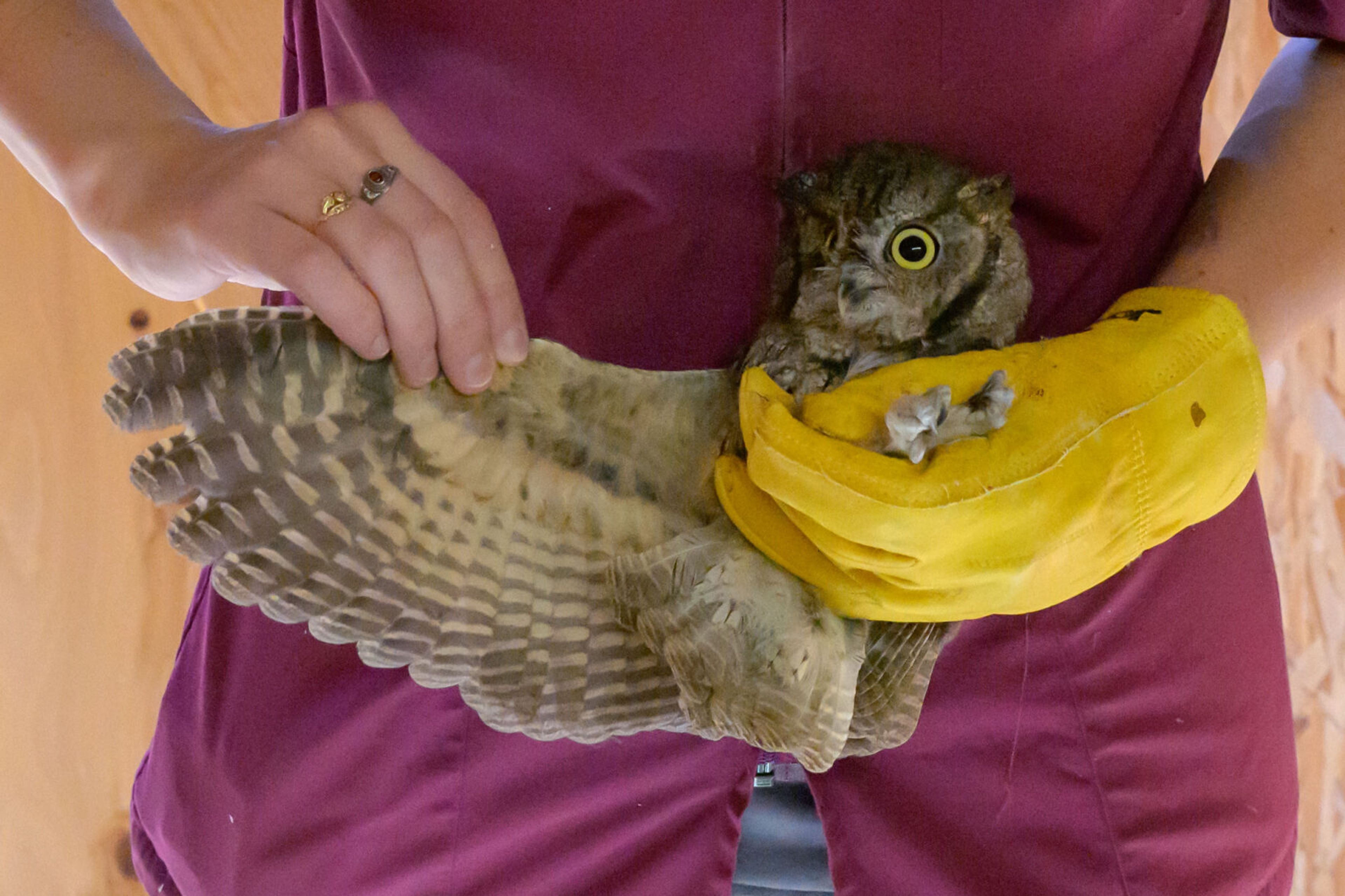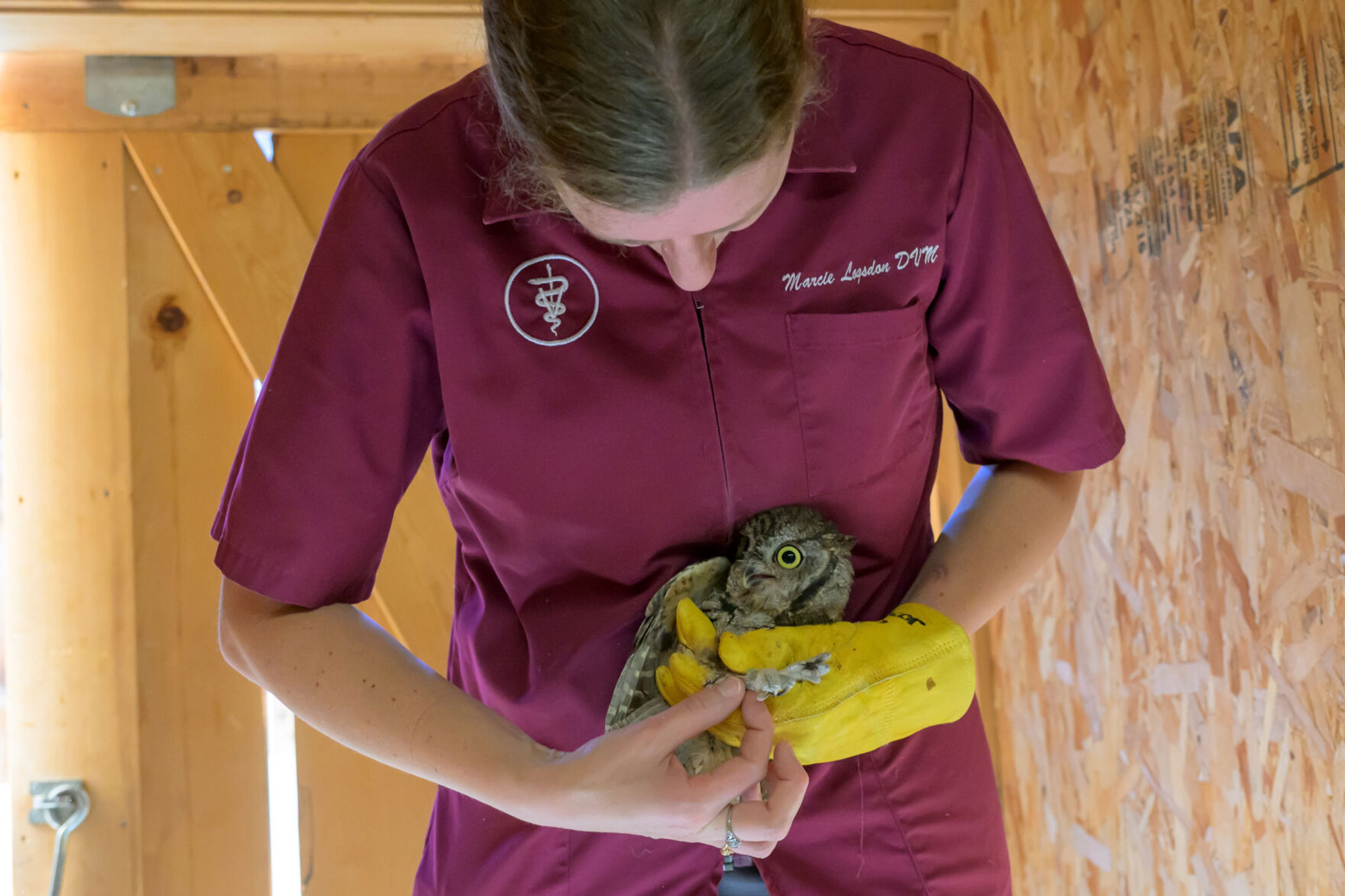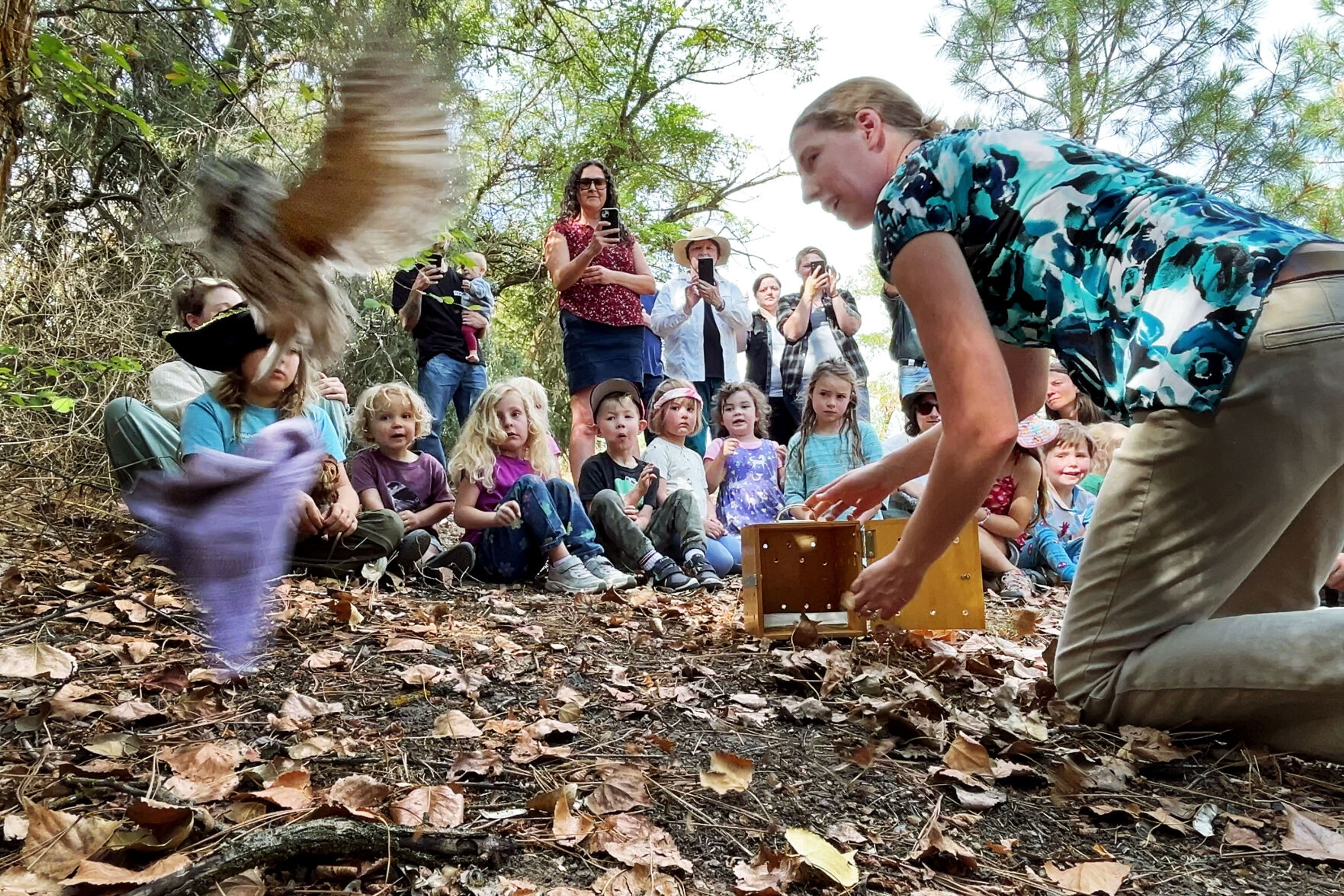Kids have a hoot with owls
Young members of a WSU class receive a lesson in wildlife dynamics and health
On Thursday, a group of children huddled around a wooden box at the Palouse-Clearwater Environmental Institute in Moscow.
Their voices were hushed as they waited patiently for the Western screech owl inside the box to work up the courage to fly away.
After poking its head out, the owl shot out of the box and into the cover of nearby trees.
The owl was cared for by the Washington State University Veterinary Teaching Hospital until it was ready to live on its own, WSU Professor Marcie Logsdon told the children.
Willow London, community engagement coordinator for the Palouse-Clearwater Environmental Institute (PCEI), told the Moscow-Pullman Daily News that the owl release was not only a great education opportunity for the children, but PCEI can be a suitable habitat for the owl to live in if it chooses.
The children are part of PCEI’s outdoor nature school Palouse Roots. The students, who are between the ages 4 and 7, have been studying owls all week in preparation for Thursday’s event.
Logsdon brought other owls to PCEI for the students to admire. One is a Northern saw-whet owl named Sawyer. The tiny 3-ounce owl is at least 12 years old and has been cared for by WSU for most of its life, Logsdon said.
Sawyer is used to people, so the children were able to get an up-close look at the patient owl as Logsdon paraded her around.
“She’s so pretty,” one of the children exclaimed.
The children also observed a small Northern pygmy owl, who was kept inside a box because it is less used to people.
Logsdon shared facts about owls with the children, including how they nest and how they hunt. She asked the students to make their best owl sounds.
She said if any child comes across an injured or orphaned animal, they should have their parents contact the WSU Veterinary Teaching Hospital.
Logsdon told the Daily News these education events are important because people tend to care much more about creatures they can actually see.
She said seeing owls up close lets the students know that wildlife is all around them and hopefully that will engage their interest in nature.
Logsdon said that rescuing and releasing one owl into the wild is a “drop in the bucket” when it comes to protecting wildlife.
She said the most effective way to protect nature is to get more people to care about animals.
“You start by caring as kids,” she said.
Kuipers can be reached at akuipers@dnews.com.
